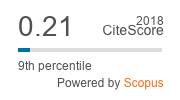Why Not Prototype Models?
Keywords:
Categorization, Prototypes, Feature modelsAbstract
This paper presents some problems faced by prototype models. It shows that the way artificial categories are
experimentally generated leads to a statistical advantage to prototypes, and discusses the notion of feature abstraction during
category acquisition. Next, the linear separability problem demonstrates that prototype models fail in predicting ease of learning
for different category types. Problems with complex categories (e.g., leather shoes, shirt with blue stripes) are introduced.
Finally, a discussion of context effects shows the inflexibility of prototype models in dealing with conceptual variability across
different situations.
Downloads
References
information in concepts. Memory & Cognition, 10, 82-93.
Barsalou, L.W. (1985). Ideais, central tendency, and frequency of
instantiation as determinant of graded structure in categories.
Journal of Experimental Psychology: Learning, Memory and
Cognition, 11, 629-654.
Barsalou, L.W. & Ross, B.H. (1986). The roles of automatic and
strategic processing in sensiti vity to superordinate and property
frequency. Journal of Experimental Psychology: Learning,
Memory, and Cognition, 12, 116-134.
Bransford, J.B. & Franks, J.J. (1971). The abstraction of linguistic
ideas. Cognitive Psychology, 2, 331-350.
Buss, D.M. & Craik, K.M. (1983). The act frequency approach to
personality. Psychological Review, 90, 105-126.
Cantor, N., Mischel, W. & Schwartz, J.C. (1982). A prototype
analysisof psychological situations. Cognitive Psychology, 14,
45-77.
Cherniak, C. (1984). Prototypicality and deductivereasoning. Journal
of Verbal Learning and Verbal Behavior, 23, 625-642.
Eysenck, M.W. & Keane, M.T. (1992). Cognitive psychology - A
student's handbook. Hillsdale: Lawrence Erlbaum Associates.
Fehr, B. & Russel, J.A. (1984). Concept of emotion viewed from a
prototype perspective. Journal of Experimental Psychology:
General, 113, 464-486.
Franks, J.J. & Bransford, J.D. (1971). Abstraction of visual patterns.
Journal of Experimental Psychology, 90, 65-74.
Gênero, N. & Cantor, N. (1987). Exemplar prototype and clinicai
diagnosis: Toward a cognitive economy. Journal of Social and
Clinicai Psychology, 5, 59-78.
Hampton, J.A. (1981). An investigation of the nature of abstract
concepts. Memory and Cognition, 9, 149-156.
Hampton, J.A. (1991). The combination of prototype concepts. Em
P.J. Schwanenflugel (Org.), The psychology ofword meanings
(pp. 91-116). Hillsdale: Lawrence Erlbaum Associates.
Herrmann, D.J., Chaffin, R.J.S., Conti, G., Peters, D. & Robbins,
P.H. (1979). Comprehension of antonomy and the generality of
categorization models. Journal of Experimental Psychology:
Human Learning and Memory, 5, 585-597.
Homa, D. (1978). Abstraction of ill-defined form. Journal of Experimental
Psychology: Human Learning and Memory, 4, 406-
416.
Homa,D.,Cross,J.,Cornell,D.,Goldman,D.&Shwartz,S.(1973).
Prototype abstraction and classification of new instances as a function of number of instances dcfining the prototype. Journal
ofExperimental Psychology, 101, 116-122.
Homa, D., Sterling, S. & Trepei, L. (1981). Limitations of exemplar-
based generalization and the abstraction of categorical
information. Journal of Experimental Psychology: Human
Learning and Memory, 7, 418-439.
Homa, D. & Vosburgh, R. (1976). Category breath and the abstraction
of prototypical information. Journal of Experimental Psychology:
Human Learning and Memory, 2, 322-330.
Horowitz, L.M., Wright, J.C., Lowenstein, E. & Parad, H.W.
(1981). The prototype as a construct in abnormal psychology:
A method for deriving prototypes. Journal of Abnormal Psychology,
90, 568-574.
Janczura, G.A. (1994). Associative slrength and frequency of instantiation
as determinants of typicality effects. Tese de Doutorado.
University of South Florida, Tampa, USA.
Kemier-Nelson, D.G. (1984). The effect of intention on what
concepts are acquired. Journal of Verbal Learning and Verbal
Behavior, 23, 734-759.
Lakoff, G. (1986). Women, fire, and dangerous things: Whatcategories
tell us about the nature ofthought. Chicago: University
of Chicago Press.
Lakoff, G. (1989). Cognitive models and prototype theory. Em U.
Neisser (Org.), Concepts and conceptual development: Ecological
and intellectual factors in categorization (pp.63-100).
Cambridge: Cambridge University Press.
Madeira, M.J.P. (1990). O papel dos protótipos no tratamento dos
conjuntos fluidos em adultos e crianças. PSICO, 20, 45-67.
Malt, B. (1989). An on-line investigation of prototype and exemplar
strategies in classification. Journal of Experimental Psychology:
Learning, Memory, and Cognition, 15, 539-555.
Malt, B.C. & Smith, E.E. (1984). Correlated properties in natural
categories. Journal of Verbal Learning and Verbal Behavior,
23, 250-269.
Medin, D.L. & Schaffer, M.M. (1978). Context theory of classification
learning. Psychological Review, 85, 207-238.
Medin, D.L. & Schwanenflugel, P.J. (1981). Linear separability in
classification learning. Journal of Experimental Psychology:
Human Learning and Memory, 7, 355-368.
Neisser, U. (1979). The concept of intelligence. lntelligence, 3,
217-227.
Osherson, D. & Smith, E. (1981). On the adequacy of prototype
theory as a theory of concepts. Cognition, 9, 35-48.
Posner, M.I. & Keele, S.W. (1968). On the gênesis of abstract ideas.
Journal of Experimental Psychology, 77, 353-363.
Reed, S.K. (1972). Pattern recognition and categorization. Cognitive
Psychology, 3, 382-407.
Rosch.E. (1975). Cognitive rcpresentationsof semantic categories.
Journal of Experimental Psychology: General, 104, 192-233.
Rosch, E. & Mervis, C.B. (1975). Family resemblances: Studies in
the internai structure of categories. Cognitive Psychology, 7,
533-605.
Roth, E.M. & Shoben, E.J. (1983). The effect of context on the
structure of categories. Cognitive Psycliology, 15, 346-378.
Samuel, A.G. (1982). Phonetic prototypes. Perception and Psychophysics,
57,307-314.
Sebetsyen, G.S. (1962). Decision-making processes in pattern recognition.
New York: Macmillan.
Smith, E.E. & Medin, D.L. (1981). Categories and concepts. Cambridge,
MA: Harvard University Press.
Strange, W., Kenney, T., Kessel, F.S. & Jenkins, J.J. (1970).
Abstraction over time of prototype from distortions of random
dot patterns: A replication. Journal of Experimental Psychology,
83, 508-510.
Zadeh, L.A. (1965). Fuzzy sets. Information and Control, 8, 338-
353.
Zadeh, L.A. (1982). A note on prototype theory and fuzzy sets.
Cognition, 72,291-297.
Whitney, P., McKay, T. & Kellas, G. (1985). Semantic activation
of noun concepts in context. Journal of Experimental Psychology:
Learning, Memory, and Cognition, 11, 126-135.



